ANIMAL ARCHITECTS OF THE SOUTHERN KALAHARI
Burrows are built by some and used by many. Some Kalahari animals build their own burrows and are known as primary excavators; others adapt existing burrows and are known as secondary modifiers; and some simply occupy existing burrows without putting any additional work into them. Guests frequently ask our field guides and trackers: “Who dug that hole?” The answer is not always straightforward, because large holes are often excavated by the master of all diggers, the aardvark, and later repurposed or used by a warthog, porcupine, pangolin, leopard, cheetah, or ant-eating chat.
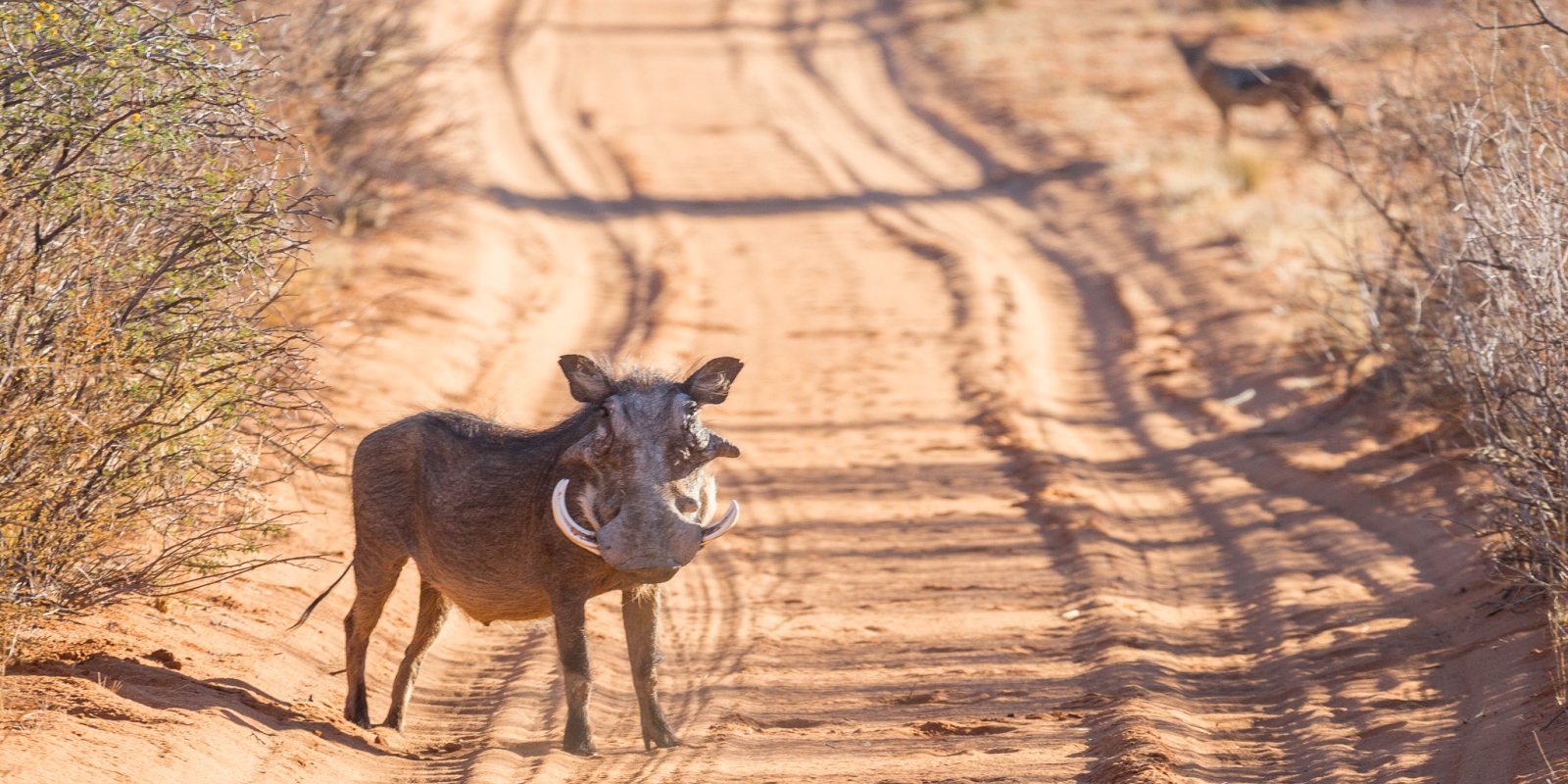
Warthogs turn aardvark burrows into family refuges
Throughout Southern Africa, aardvark burrows are used by warthogs to sleep in. A fun fact that guides like to tell their guests is how warthogs adapt the burrow if they have piglets – usually in the summer, which is also the rainy season in most parts of the subcontinent – by building a ‘bunk bed’, or what is essentially a shelf in the sleeping chamber, for the piglets to sleep on. In that way, should it rain at night and the burrow floods, the little piglets are safe from drowning thanks to their elevated sleeping quarters.
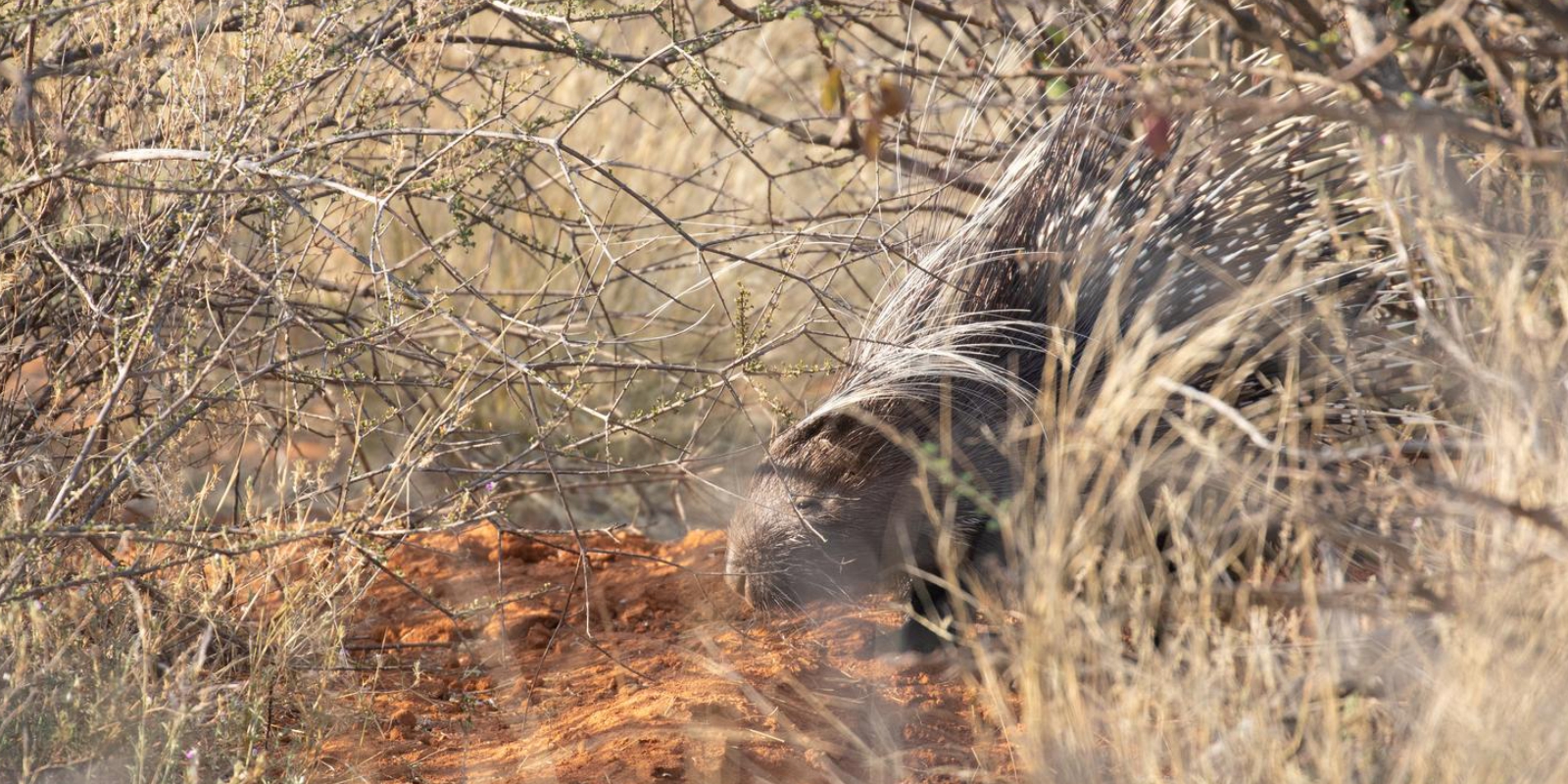
Porcupines redesign and expand on aardvark burrows
When porcupines find an abandoned aardvark burrow, they tend to renovate it by creating side tunnels, extra chambers, and sometimes new entrances and exits too. Tunnels can become so large that the weight of a large animal walking over one, or even just the weight of the sand when it becomes wet after rain, can make the structure partially collapse, leading to impressive openings that humans can stand upright in.
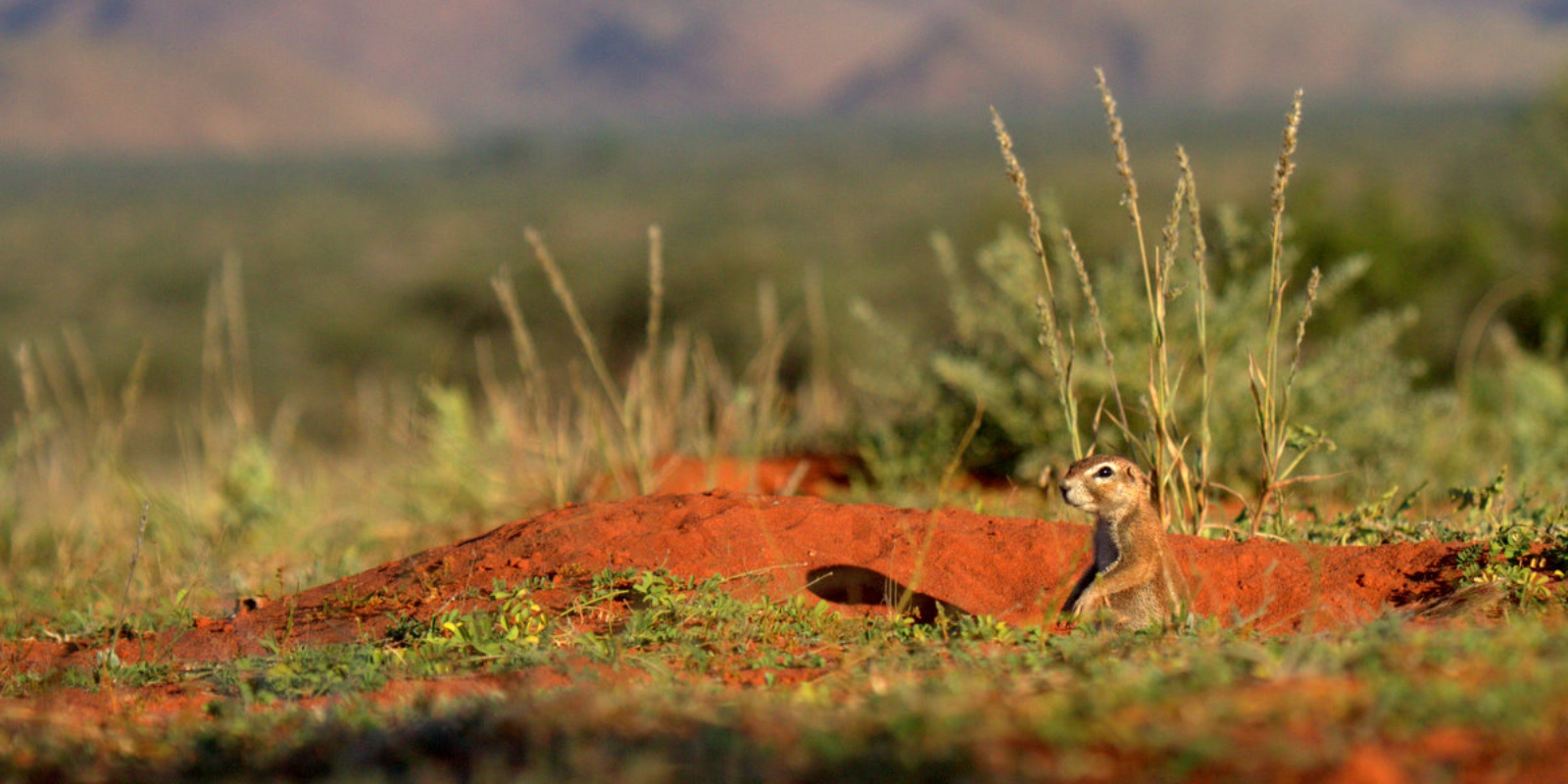
Cape ground squirrels are highly efficient diggers
Another group of master diggers of the Kalahari are rodents of varying sizes, including the Cape ground squirrel. Relative to their size, they dig intricate networks of tunnels and chambers to form burrow systems that can span up to 400 square metres. These burrow systems are often expanded on or adapted by other animals, such as meerkats.

FROM LEFT TO RIGHT: MEERKAT, GROUND SQUIRRELS, AND YELLOW MONGOOSE.
Although they can dig their own burrows, meerkats seem to prefer to expand on existing burrow systems – especially ones perfectly suited to their size. Meerkats have a very gregarious nature and a tight social structure, so it is likely that they expand the chambers within a burrow system to make space for the whole gang. Even after making a burrow system their own, meerkats often share them with the squirrels and even yellow mongooses, albeit in separate sleeping chambers. When visiting one of the habituated colonies on the reserve, it is not unusual to see squirrels or yellow mongooses popping out of other entrances in the same burrow system.
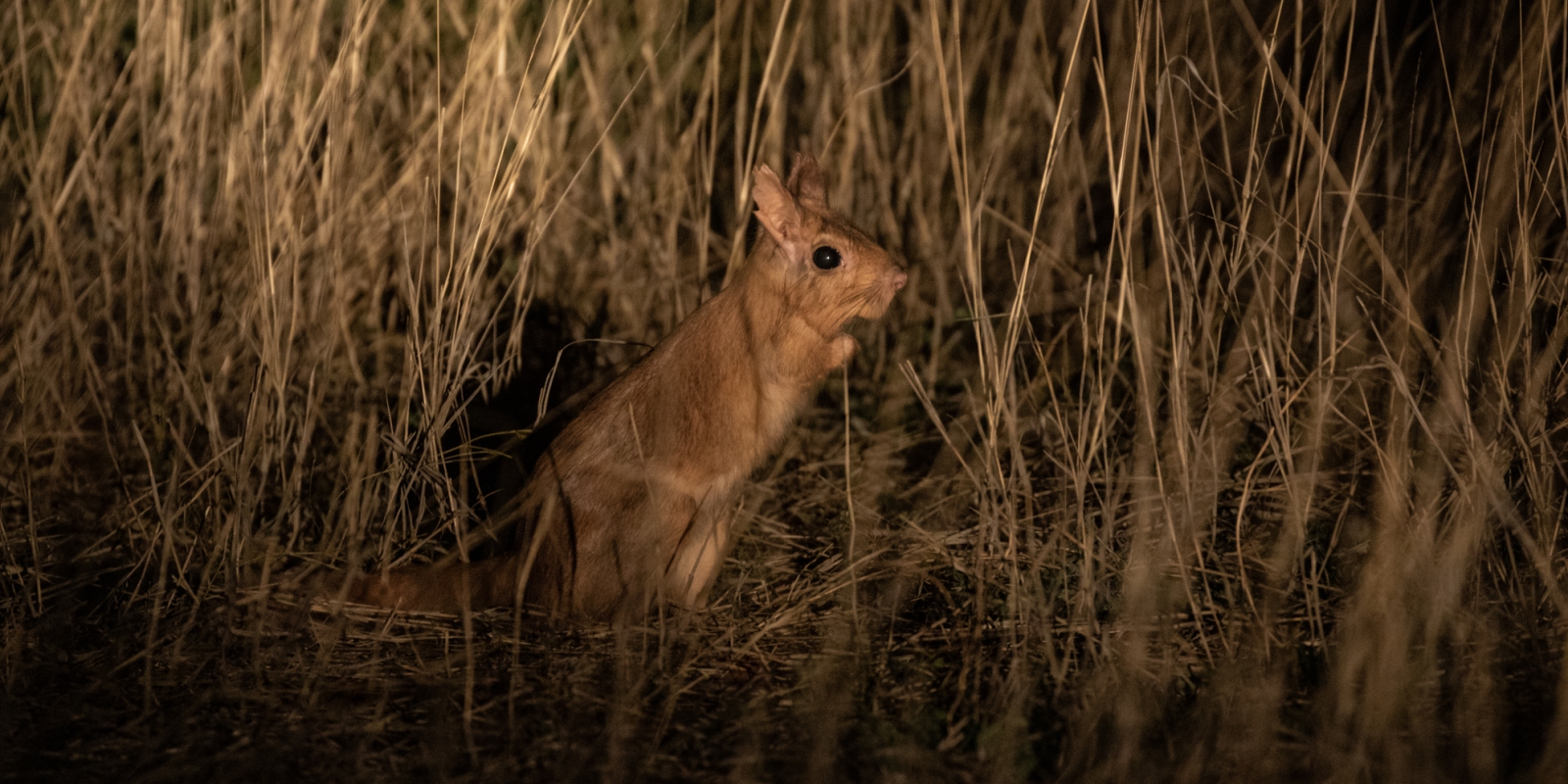
Spring hares are also burrowing experts
Another rodent, the spring hare, also digs impressive burrows. Though a little smaller in diameter than those of the squirrel and meerkat, their burrows can be up to a metre deep and cover areas of up to 170 square metres with several entrances. Some are visible, due to the pile of excavated sand at the opening, but others are hidden among vegetation – a clever escape route, and possibly also for the purpose of ventilation. As an extra precaution, spring hares avoid the ‘breaking and entering’ of predators by plugging the entrance to their burrows once they are inside.

FROM LEFT TO RIGHT: AFRICAN WILD CAT, AARDWOLF, AND TEMMINCK’S PANGOLIN.
When unoccupied, spring hare burrows are sometimes utilised as is by the African wild cat or Temminck’s pangolin. An aardwolf will enlarge the entrance tunnel substantially, but keep the den itself fairly narrow, to use both as a resting place during the day and a den site. An aardwolf will not use the spring hare’s extensive network of tunnels and multiple entry and exit routes, but enlarge and maintain one entrance (rarely two) with a long tunnel into the den itself.1
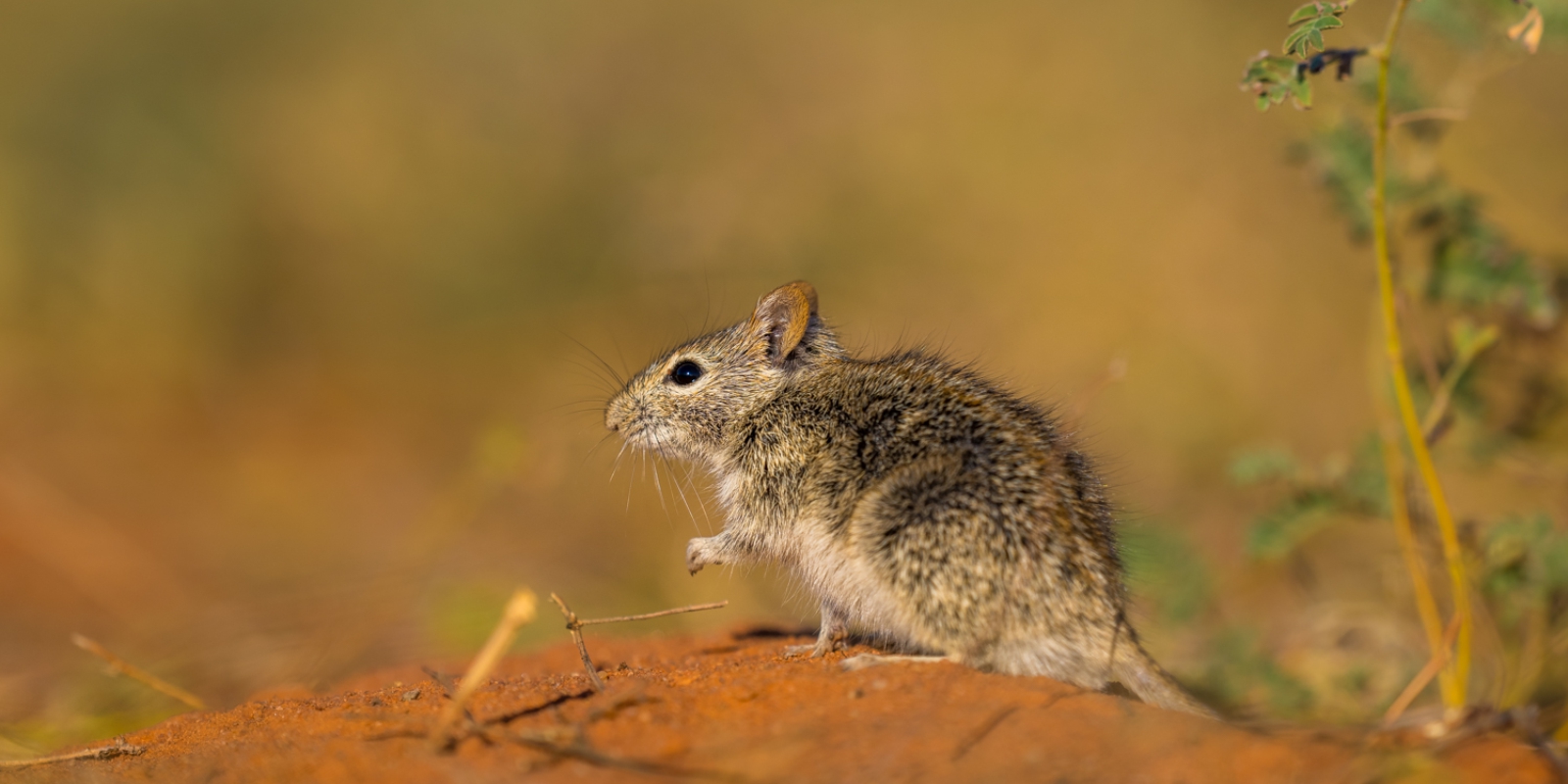
Mice, shrews and other tiny digging rodents
Like the Cape ground squirrel and meerkat, mice, shrews, rats and other small rodents create extensive networks of underground tunnels with storage and sleeping chambers. Size wise, they happen to make excellent escape routes or even hunting grounds for most species of snakes, including the Cape cobra. Snakes will disappear into holes to escape predators or extreme temperatures.

LEFT AND RIGHT: CAPE COBRA MAKING USE OF EXISTING BURROWS.
Part three of this series will unpack the many uses of burrows and their importance in the Kalahari ecosystem.
Authors note: Helen Mertens drew on the expertise of Grace Warner and Wendy Panaino while researching this story.
Bibliography:
- Anderson, M.D. and P.R.K. Richardson, 2005, “The physical and thermal characteristics of aardwolf dens.”
Images by Marcus Westberg, Kyle Ansell, and Barry Peiser.

